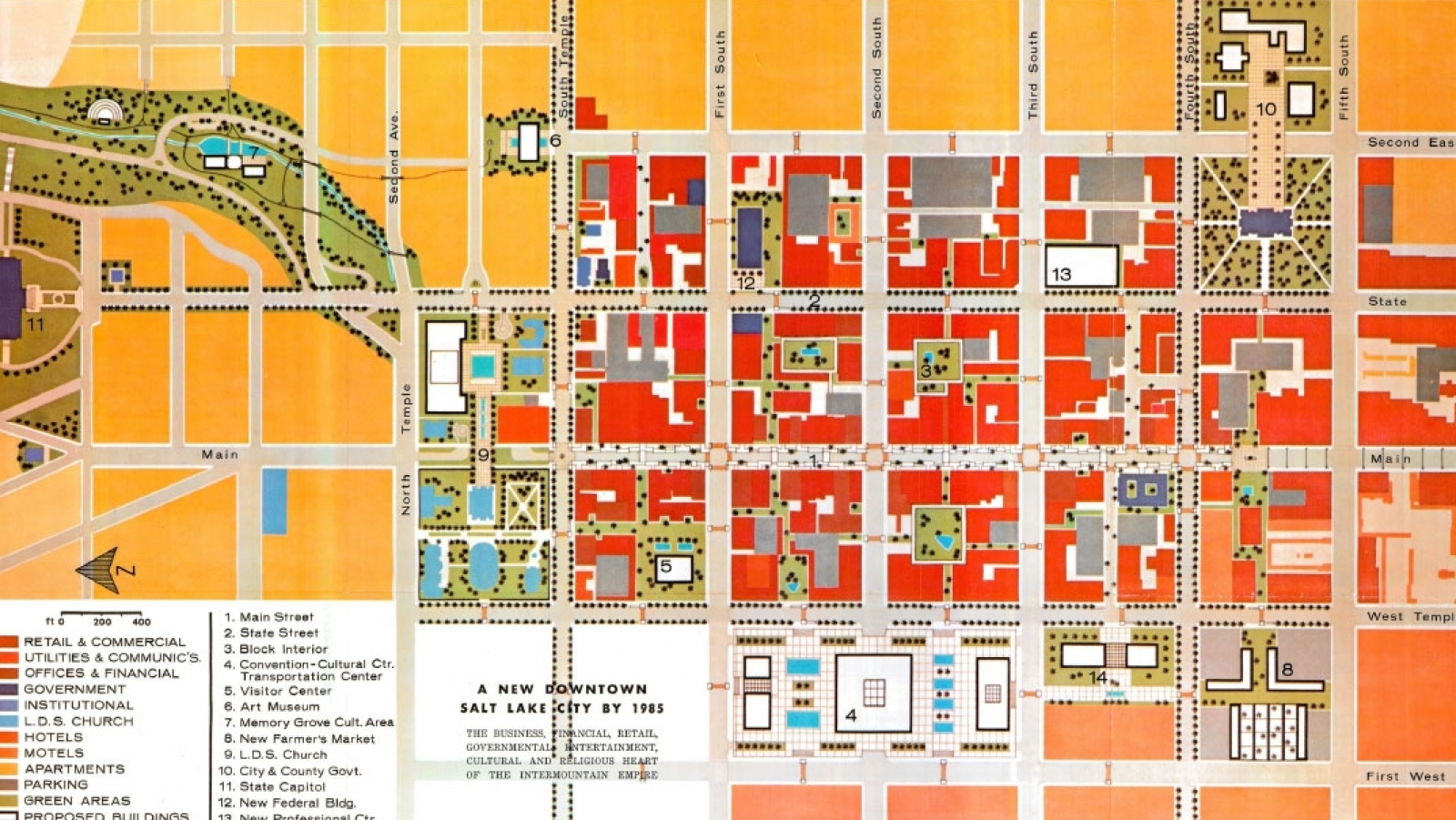Dee Brewer, Executive Director, Downtown Alliance
A century after Salt Lake City was established, a group of downtown stakeholders began working on a remarkably enduring vision for downtown—the Second Century Plan which they unveiled in 1962.
The Downtown Planning Association, Inc and the Utah Chapter of the American Institute of Architects put forward some big ideas. They proposed a campus of cultural buildings for performances and gatherings (think Salt Palace and Abravanel Hall) and called for a farmers market and a transportation center (sound familiar?). They sketched plans for a modern government complex to anchor the south end of downtown (library square). And the planners suggested that City Creek Park be extended toward downtown (which it was) and programmed with a planetarium, aquarium, natural history museum and a children’s science museum.
They called for mid-block crosswalks and for covering downtown sidewalks with canopies. They advocated for “increasing the density, efficiency and attractiveness of the undeveloped interiors of downtown blocks” with inviting walkways and plazas. “Main Street should become a street where pedestrians have right-of-way all of the time” they declared.
“People give life, vitality and excitement to any city’s downtown—their needs and desires must be the dominant factor in any plan for the future.” - Second Century Plan
The stakeholders wrote at length about transportation and how the new interstate highway should be integrated. They designated West Temple and State Street as downtown car corridors and envisioned shuttle bus systems to connect the various anchors and reduce unnecessary car traffic. “Once autos and busses have brought people downtown they should be able to shed their vehicles easily.” And they advised that downtown development should accommodate helicopter service from the new airport. While helipads did not catch on, it is impressive just how much of the plan has been implemented.
Culture, technology and our economy have evolved immensely in the last sixty years and the next sixty years will be even more transformative. As we plan for those transformations, I think we can borrow the 1962 planners’ guiding principle to illuminate our path: “People give life, vitality and excitement to any city’s downtown—their needs and desires must be the dominant factor in any plan for the future.”
Oh, and that pedestrian-first Main Street idea? The Downtown Alliance is experimenting with that concept this summer with Open Streets--every Thursday, Friday and Saturday--when Main Street is closed to cars and open to pedestrians, dining and entertainment. Come and explore the fun this weekend!
Here are the Second Century map, illustrations, and text plans.

